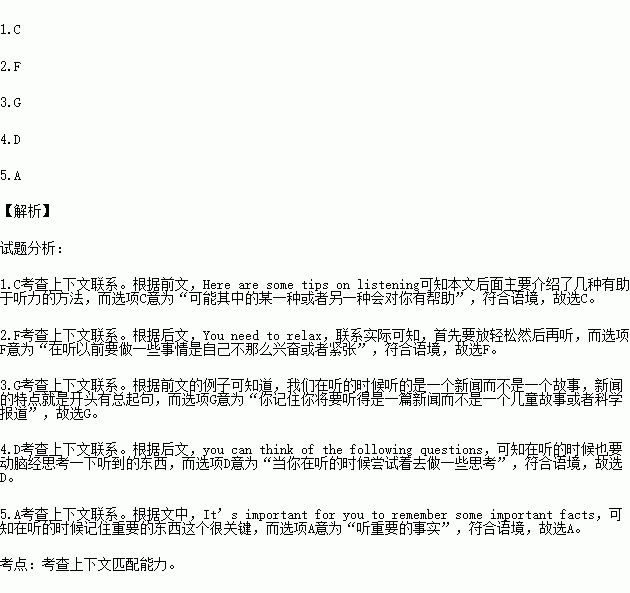题目内容
根据短文内容,从短文后的选项中选出能填入空白处的最佳选项。选项中有两项为多余选项。
Here are some tips on listening.1._____________.
Relax yourself
2.______________. You need to relax.This will help you with your listening.
Listen carefully to the first sentence
The first sentence tells a lot about the whole passage. For example, if,at the beginning, you hear “Many shops in many parts of China have decided to take away all kinds of Japanese goods off their shelves, but some people say it’s not a good idea. Our reporter says…”, 3._______________.
Think when you’re listening
4._____________. For example, you can think of the following questions:What happened? When,where and how? What was the result and what did the speaker want to tell us? In this way, you may understand the passage better.
5._____________
It’s important for you to remember some important facts. For example, if the passage is a science report, you should try to remember its findings, and how the scientists got their results. This is also helpful to your listening.
A. Listen to important facts
B. Pay attention to key words
C. Maybe they can help you in one way or another
D. When you’re listening, try to do some thinking
E. This is especially helpful to improve your listening skills
F. Before you start listening to something, don’t get excited or nervous
you start listening to something, don’t get excited or nervous
G. you know you will hear a piece of news, not a children’s story, or a science report


 e oil paint and our carpet . It worked perfectly .
e oil paint and our carpet . It worked perfectly . can conclude from the passage that____________.
can conclude from the passage that____________. he author was not satisfied with his family life
he author was not satisfied with his family life